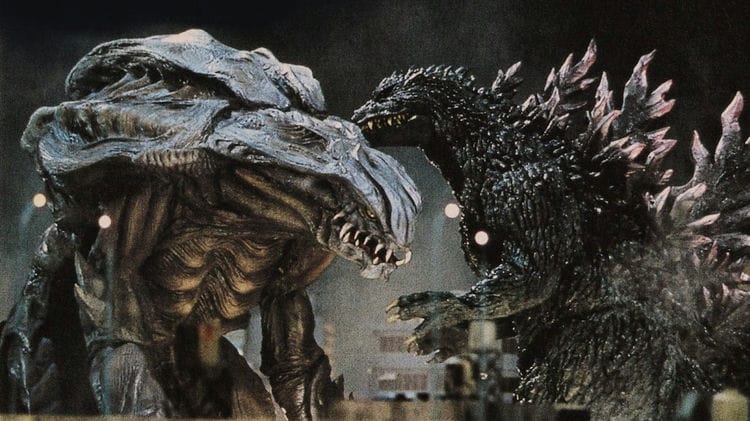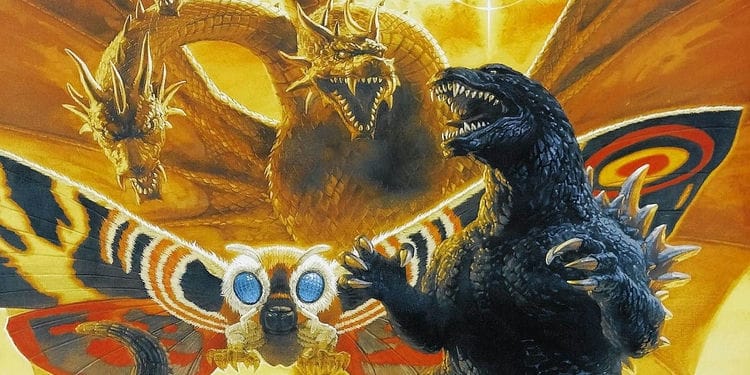SPORT & LIFESTYLE NEWS
How Godzilla Was Born: The Origin of the King of Monsters
How Godzilla was born, and what are the roots of this colossal creature? Let’s dive into the origin story of Godzilla and explore the cultural and historical context that gave rise to this legendary monster with AlibayTrendy Store now
The Birth of Godzilla
Godzilla, the iconic monster that has captured the imagination of audiences worldwide, first emerged on the big screen in 1954 with the release of “Gojira.” This groundbreaking film, directed by Ishirō Honda and produced by Toho Studios, introduced a new kind of cinematic monster—one whose roots were deeply entwined with real-world events.

The timing of the film’s release was significant, coming less than a decade after the atomic bombings of Hiroshima and Nagasaki, which marked the end of World War II but left a profound scar on the Japanese psyche. The devastating consequences of those bombings, combined with the ongoing Cold War and the nuclear arms race, created an atmosphere of fear and uncertainty that shaped the cultural landscape of Japan during that era.
The creation of Godzilla was a direct response to these anxieties. This monster was not just another cinematic creature; it was a living embodiment of the dread surrounding nuclear technology and its destructive potential. The filmmakers aimed to reflect the collective trauma experienced by the Japanese people and to warn against the dangers of unchecked scientific and technological advancements.
Godzilla’s size, strength, and capacity for destruction served as a chilling reminder of the catastrophic impact of nuclear warfare, resonating with audiences who were still grappling with the aftereffects of the bombings and the threat of further nuclear escalation.
How Godzilla Was Born?
Godzilla’s origin story is intrinsically linked to the concept of nuclear radiation and its potentially disastrous consequences. In the original film, Godzilla is depicted as a prehistoric sea creature that has been awakened and mutated by the detonation of a hydrogen bomb during nuclear testing.

This backstory provides a tangible connection to the real-world concerns of the early 1950s, a time when nuclear testing was a contentious issue, with significant debates surrounding its safety and environmental impact.
The image of Godzilla, a massive creature emerging from the depths of the ocean to wreak havoc on Tokyo, serves as a powerful metaphor for the unpredictable and uncontrollable nature of nuclear technology. As Godzilla stomps through the city, laying waste to everything in his path, audiences are reminded of the sheer power and devastation that can result from nuclear weapons.
The film’s depiction of widespread destruction, including iconic scenes of crumbling buildings and fleeing crowds, underscores the destructive potential of humanity’s technological advances when not properly managed. The original “Gojira” film used Godzilla to highlight the tragic consequences of nuclear testing, illustrating how humanity’s pursuit of power could lead to unintended and catastrophic outcomes.
By tapping into these fears, the film struck a chord with viewers, who saw in Godzilla a cautionary tale about the importance of responsible stewardship over technology and the environment. This connection to nuclear themes has remained a defining characteristic of the Godzilla franchise, influencing its evolution over the decades and ensuring its continued relevance in a changing world.
A Symbol of Nature’s Wrath
While Godzilla’s origins are closely tied to nuclear radiation, his character has come to symbolize more than just the horrors of atomic energy. Godzilla’s massive size, raw power, and indomitable presence represent the awe-inspiring and often terrifying force of nature. This interpretation reflects a broader theme that resonates with audiences across cultures and generations: the latent potential for disaster when humanity oversteps its bounds and disrupts the natural order.

Throughout his cinematic journey, Godzilla has undergone a transformation from a destructive menace to a reluctant protector. In the early films, Godzilla’s rampages across cities and his battles with other monsters were often seen as punishment for humanity’s transgressions against nature. This portrayal highlighted the unpredictable consequences of environmental exploitation and technological hubris.
As the franchise evolved, so did Godzilla’s role. He transitioned from a force of retribution to a more complex character, often portrayed as a guardian who battles other threats to protect the planet. This evolution mirrors changing societal attitudes toward technology, industry, and environmental responsibility. It suggests a growing awareness of the need to coexist with nature rather than seek to control or exploit it.
Godzilla’s Cultural Impact
The cultural impact of Godzilla has been nothing short of phenomenal, transcending geographical boundaries to become a global sensation. The success of the original “Gojira” film in 1954 laid the groundwork for a franchise that would span decades, with numerous sequels, spin-offs, and adaptations across various media. Godzilla’s enduring appeal can be attributed to his versatility, allowing filmmakers to explore different themes and narratives while keeping the character fresh and relevant.

Beyond the big screen, Godzilla has made his mark in comics, television shows, video games, and even theme park attractions. This widespread presence in popular culture has helped cement Godzilla’s status as an iconic figure. In many Western adaptations, Godzilla is depicted as a heroic character, often defending humanity from other monstrous threats. This shift from the original Japanese portrayal reflects changing cultural contexts and the flexibility of the character to adapt to different storytelling approaches.
The story of Godzilla’s origin is a compelling mix of history, culture, and societal fears. As a character, Godzilla has undergone many transformations, reflecting changing times and evolving cultural themes. From symbolizing the dangers of nuclear technology to becoming a force of nature’s vengeance, Godzilla remains an enduring icon that captivates audiences across generations.
If you’re a Godzilla fan or know someone who is, why not show your love for the King of Monsters with some unique merchandise? Visit AlibayTrendy Store for a wide selection of Godzilla-themed Hawaiian shirts, perfect for making a statement at your next gathering or just adding some monstrous flair to your wardrobe. Click now to explore the collection and find your new favorite shirt!
